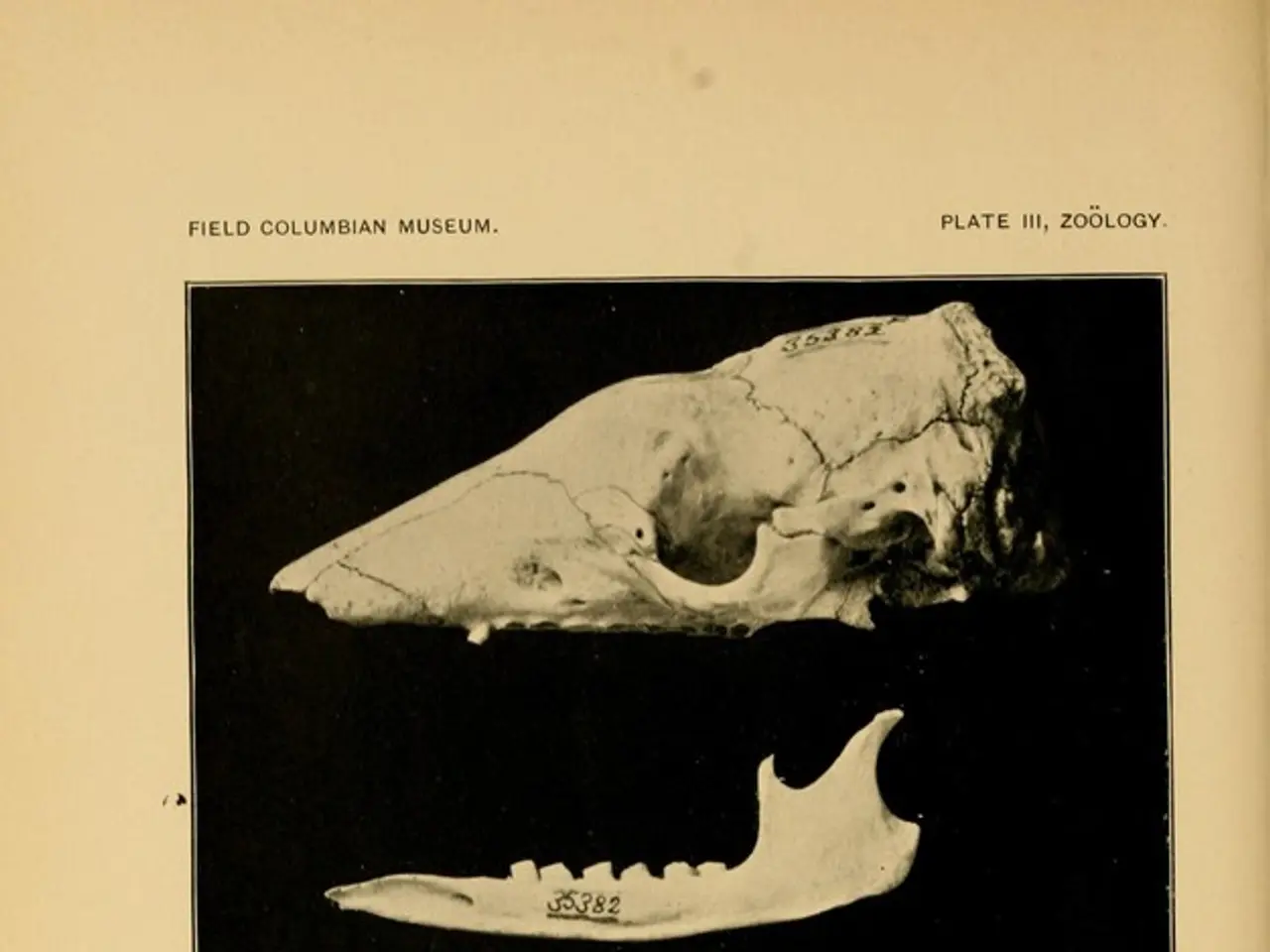Bone and Cartilage Disorders: Categorizations, Signs, Remedies, and Prognosis
Osteochondritis and osteochondrosis are related terms that often find themselves in discussions about bone and cartilage conditions. While they share some similarities, they are distinct in their specific meanings and typical use contexts.
Osteochondritis refers to inflammation of the bone and cartilage. It is often used specifically in the context of osteochondritis dissecans (OCD), a joint condition where a segment of bone and its overlying cartilage separates due to loss of blood supply (ischemia), causing necrosis and potential fragment detachment. OCD most commonly affects the knee, elbow, and ankle in young athletes and juveniles and is characterized by stages related to stability and separation of the bone-cartilage fragment.
On the other hand, osteochondrosis describes a group of developmental conditions involving failure of endochondral ossification, typically without an inflammatory component, often leading to abnormal bone growth or structural bone changes. It is a broader term including diseases caused by disrupted blood supply to growing bone, leading to necrosis, imperfect growth, and deformities.
Differences between Osteochondritis and Osteochondrosis
| Aspect | Osteochondritis | Osteochondrosis | |-------------------------|--------------------------------------------|----------------------------------------------| | Meaning | Inflammation of bone and cartilage | Developmental failure of bone ossification | | Typical cause | Ischemia and inflammatory damage in joint | Vascular disruption causing growth abnormalities | | Common usage | Osteochondritis dissecans (OCD) in joints | Developmental bone disorders (e.g., Scheuermann disease) | | Clinical manifestation | Cartilage and subchondral bone separation, fragment instability | Bone growth abnormalities, deformities | | Age group often affected| Juveniles, young athletes | Juveniles during bone growth phase |
Diagnosis and Treatment
The first step in diagnosing osteochondrosis is a physical exam. Doctors may often rely on imaging techniques such as X-rays and MRI scans to confirm the diagnosis. Arthroscopy, which uses keyhole surgery to insert a tiny camera into joints, can also be used for diagnostic purposes.
In terms of treatment, doctors have several means at their disposal. For less severe cases, they might recommend temporarily reducing motion in an affected joint, using weight-bearing aids, or drilling into an affected joint. Surgery might be necessary for more severe cases.
It's important to note that the success rates for these treatments vary. Drilling techniques have symptom improvement rates between 92% and 100%, while the success rate of surgery is between 30% and 100%.
Any individual with symptoms of osteochondrosis, such as joint pain, stiffness, reduced mobility, joint stiffness, abnormalities in the knee joint or surrounding tissues, and structural changes within the joints, should contact a doctor, especially if they belong to a group that has an elevated risk of developing this condition.
The National Institutes of Health (NIH) provides information about the symptoms, causes, and risk factors of osteochondrosis. For more detailed information, it's recommended to consult the NIH or a healthcare professional.
[1] Kocher MS, Sekiya K. Osteochondritis dissecans of the knee. In: Green DP, ed. Operative Sports Medicine. Philadelphia, PA: Elsevier; 2014:1131-1140. [2] Kostuik JP, Sekiya K. Osteochondritis dissecans of the elbow. In: Green DP, ed. Operative Sports Medicine. Philadelphia, PA: Elsevier; 2014:1141-1150. [3] Kocher MS, Sekiya K. Osteochondritis dissecans of the ankle. In: Green DP, ed. Operative Sports Medicine. Philadelphia, PA: Elsevier; 2014:1151-1160. [5] Kostuik JP, Sekiya K. Osteochondrosis. In: Green DP, ed. Operative Sports Medicine. Philadelphia, PA: Elsevier; 2014:1161-1170.
- Beyond bone and cartilage conditions, osteochondritis and osteochondrosis have links with a variety of medical conditions, including chronic diseases, respiratory conditions, digestive health issues, eye health problems, hearing disorders, and skin conditions.
- Workplace wellness programs can incorporate education about osteochondritis and osteochondrosis, as understanding these conditions is crucial for maintaining cardiovascular health and overall mental health.
- In addition to osteochondritis dissecans (OCD), fitness and exercise play a significant role in managing other musculoskeletal conditions related to bones and cartilage, such as autoimmune disorders and sports injuries.
- Proper skin care, coupled with therapies and treatments, becomes essential for individuals with skin conditions like psoriasis, which may potentially exacerbate osteochondritis symptoms or lead to health complications.
- A balanced diet rich in essential nutrients is vital for managing chronic kidney disease, as well as promoting healthy cartilage growth and preventing osteochondrosis in its developmental stages.
- Conversely, severe osteochondrosis can contribute to the development of chronic kidney disease, given the close relationship between bone and kidney functions.
- Furthermore, osteochondritis and osteochondrosis treatment regimens might require modifications when dealing with patients suffering from cancer and other serious medical conditions that necessitate specialized care plans.
- In addition, mental health should be taken into account when developing strategies to address and manage osteochondritis and osteochondrosis, as psychological factors can impact one's ability to follow through with treatment plans or exercise regimens.
- For comprehensive information on the relationship between osteochondritis, osteochondrosis, and other health-related aspects, individuals may consider referring to credible resources such as reputable websites on health and wellness, medical journals, or consulting healthcare professionals in the field of orthopedics and rheumatology.
- To prevent potential complications, individuals with symptoms of osteochondrosis should also monitor their digestive health and respiratory conditions, as these factors can interfere with proper osteochondritis and osteochondrosis treatment outcomes.
- By taking matters into their own hands through lifestyle changes, such as improving nutrition, maintaining a regular exercise routine, and seeking early medical attention when needed, individuals can reduce their risk of developing osteochondritis and a host of other chronic health conditions, including osteochondrosis and other musculoskeletal disorders.




